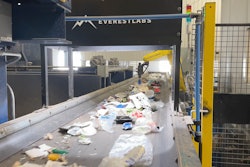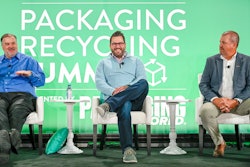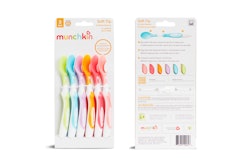
On November 1, Rumpke Waste & Recycling will be announcing to its customers on that moving forward, it will be accepting thermoforms at its new Columbus plant. On its face, the acceptance of PET thermoforms by a MRF may not seem newsworthy, but this packaging type has long been a thorn in the side of the recycling world.
At Packaging World’s Packaging Recycling Summit in September, in a panel entitled, “Enhancing Thermoform Circularity: An Opportunity for Improvement,” Megan Moore, program director for the National Association for PET Container Resources (NAPCOR), shared that while PET thermoforms are molecularly identical to PET bottles, they have struggled to find their place in the recycling stream. One reason is access. “Less than 60% of communities or of the population has access to thermoform recycling at this moment,” she noted, adding that there are significant regional disparities in thermoform recycling capabilities.
In the Midwest, including markets such as Ohio, Kentucky, Indiana, Illinois, and West Virginia where Rumpke operates, thermoforms have traditionally been an anathema to MRFs as they end up contaminating PET bottle bales.
 | Read this related article, “Rumpke and Eastman Join Forces to Expand Recycling of PET Waste” |
“We sell to bottle-to-bottle folks that are making new clear PET bottles,” said Jeff Snyder, senior VP of Recycling at Rumpke Waste & Recycling. “The first thing those folks do [when they get a PET bale] is they strip out the thermoforms, they strip out the color [colored PET], and they take the clear PET bottles and recycle them back into clear PET bottles. So if you get over 10% thermoforms in that bale, it can be rejected because now you’re increasing the cost and increasing the amount of material they have to throw away or get rid of because they can’t make new bottles out of it.”
As Zach Muscato, corporate sustainability manager at custom thermoformer Plastic Ingenuity (PI), explained, thermoforms are a contaminate due to their use of labels. “The labels on thermoforms tend to be very hard to remove,” he said. “Oftentimes there is a fiber component to those labels, so they contaminate the PET recycling stream.”
He added that to make thermoforms more compatible with the recycling stream, PI designs packaging for its customers with this in mind. “A big part of what we do when we design a package is not just look at the thermoforms we’re designing, but look at the package holistically and say, if you want this to truly be recyclable, you really need to be cautious and look at your label selection and think about how you’re going to go about that. So there are a lot of different aspects that go into those design collaborations.”
Muscato then gave a shout-out to The Association of PET Recyclers and its APR Design Guide in helping PI navigate design for recycling. “Their design guidance for plastic products is unbeatable,” he said.
With extended producer responsibility legislation requiring greater PCR in packaging and brands’ committing to significant increases in the use of the recycled material, there are clear economic incentives for making PET thermoforms more widely recyclable. “We need more PET,” said Moore. With only 30 to 35% of PET being recovered in the U.S., there’s a significant opportunity to increase recycling rates. Moore added that the PET bottle market is about 6.5 billion pounds, while thermoforms account for 1.8 billion pounds. “As we’re tracking EPR and brand commitments, we see that by 2027 we need to reclaim almost a hundred percent PET for everybody to hit these commitments,” she explained.
 | Read this related article, “Caglia Environmental Unveils AI Robot in Fresno,” to learn how new technology for MRFs is allowing for sorting of PET streams into bottles, thermoforms, and pigmented/opaque PET. |
Pointing to recent progress in thermoform recycling, Muscato shared that over the last three to four years, the industry has begun to see more thermoform-only bales, especially on the West Coast, where produce growers are clamoring for more PCR from thermoform waste. “You could point to one brand in particular,” he said. “Driscoll’s stepped up and said, ‘We want PCR strictly from thermoforms in our clamshells so we can build that circular economy for the thermoforms we consume.’ That commitment they made was very public, and it literally drove a market.”
In the Midwest, where mechanical recycling of PET is sparse, Rumpke is producing bales comprising PET thermoforms, colored PET, and PET cups that will be sold to Eastman to power its molecular recycling technology in nearby Kingsport, Tenn. Shared Snyder, while the thermoform-only bales are of lesser value, the ability of Rumpke to now create 100% clear bottle bales will allow it to fetch over-market value for this material. “And the cool thing was, I was able to add a commodity,” he said. “So that was the motivation for me.” PW
























